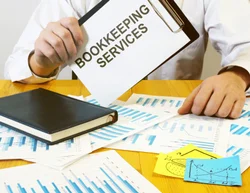
The Consumer Packaged Goods (CPG) industry operates in a fast-paced, highly competitive environment where efficiency, precision, and adaptability define success. Whether it’s managing razor-thin margins, balancing promotional campaigns, or maintaining an optimal inventory, CPG accounting plays a vital role in ensuring profitability and sustainability. This article will unpack the essentials of CPG accounting, explore strategies for mastering margins, promotions, and inventory management, and discuss how modern solutions such as bookkeeping services for blockchain are revolutionizing financial transparency and efficiency across the industry.
Understanding the Core of CPG Accounting
CPG accounting involves the specialized financial management of businesses that produce and sell goods consumed daily—items like food, beverages, toiletries, and household supplies. Unlike other industries, CPG companies deal with high-volume sales, low margins, and constant product movement. Their accounting systems must handle multiple channels, promotional discounts, chargebacks, and fluctuating costs of goods sold (COGS).
At its foundation, CPG accounting revolves around three major challenges: managing profit margins, tracking promotional performance, and maintaining efficient inventory levels. Each of these aspects requires precise data, timely reporting, and a deep understanding of how market forces and operational decisions impact the bottom line.
Managing Margins Effectively
Margins are the lifeblood of CPG profitability. With product competition and pricing wars constantly pressuring revenue, accurate margin management can make or break a brand.
Cost Tracking and Allocation
The first step toward managing margins like a pro is understanding every component that contributes to the cost structure. This includes raw materials, packaging, logistics, labor, marketing, and overhead. Many CPG firms struggle because they rely on outdated or fragmented accounting systems that obscure true product costs. Modern accounting tools, especially those integrated with bookkeeping services for blockchain, allow businesses to track cost data transparently and in real time. Blockchain-based bookkeeping ensures that every transaction is immutable, verifiable, and traceable—reducing the risk of errors and improving cost accuracy.
Pricing and Profitability Analysis
After understanding costs, companies can perform profitability analyses at various levels—product, category, customer, and channel. This helps determine which products contribute most to profit and which ones drag margins down. Advanced analytics can also forecast how price changes or cost fluctuations will affect profitability, allowing decision-makers to respond proactively.
Automation and Real-Time Reporting
Automation is another critical element in margin management. Automated accounting systems minimize manual errors, streamline reconciliation, and provide instant insights into gross and net margins. Real-time dashboards help finance teams react quickly to market shifts or operational inefficiencies, keeping profitability on track even in volatile conditions.
Mastering Promotions for Maximum Return
Promotions are a staple of CPG marketing, driving consumer interest and short-term sales spikes. However, they also introduce complexity into accounting, as discounts, rebates, and cooperative marketing expenses can significantly distort financial clarity if not managed carefully.
Measuring Promotional Effectiveness
The key to effective promotion management is accurate measurement. CPG accountants must evaluate not just the sales lift during a promotion but also the net profitability after factoring in all associated costs. For instance, a discount may increase sales volume but decrease overall margin if it erodes profit per unit.
By integrating sales and accounting data, companies can determine which promotions generate sustainable growth versus those that merely shift demand temporarily. Leveraging blockchain-enabled bookkeeping enhances transparency across partners—manufacturers, retailers, and distributors—ensuring all promotional spending is recorded and validated without discrepancies.
Accounting for Trade Spend
Trade spend, often one of the largest expense categories for CPG brands, includes slotting fees, cooperative advertising, and promotional allowances. Mismanagement of trade spend can lead to lost profits and budget overruns. A clear accounting framework is essential for tracking commitments, accruals, and settlements accurately.
Blockchain bookkeeping solutions can automate and validate trade spend transactions, reducing disputes and ensuring compliance. They also create a verifiable record that auditors and stakeholders can easily review, strengthening financial accountability.
Optimizing Inventory Management
Inventory management is another cornerstone of successful CPG accounting. Because consumer preferences change quickly and supply chains are complex, maintaining the right balance between too much and too little inventory is a constant challenge.
Demand Forecasting and Cost Control
Effective inventory management begins with accurate demand forecasting. Historical data, seasonality trends, and market intelligence all contribute to predicting future demand. When inventory is aligned with demand, businesses minimize holding costs and avoid stockouts.
Accountants play a crucial role by ensuring inventory valuation reflects reality. Costing methods such as FIFO (First In, First Out) or weighted average must be applied consistently to ensure accurate COGS calculations. Blockchain-based bookkeeping services enhance this process by providing tamper-proof transaction data on product movement, supplier costs, and logistics expenses, improving both accuracy and auditability.
Integrating Accounting with Supply Chain Operations
Modern CPG accounting no longer functions in isolation. Integration with supply chain systems enables real-time tracking of goods, from raw materials to retail shelves. This visibility helps identify bottlenecks, reduce waste, and improve working capital efficiency.
For instance, when sales data shows a surge in a particular product, automated systems can adjust purchasing and production levels to prevent shortages. At the same time, accounting teams can update inventory values and cash flow projections instantly, ensuring financial statements remain accurate.
Leveraging Technology for Smarter CPG Accounting
The digital transformation of accounting has fundamentally changed how CPG businesses operate. From AI-powered analytics to cloud-based ERP systems, technology now enables faster, more precise financial decision-making.
Blockchain and Bookkeeping Innovations
Among these innovations, bookkeeping services for blockchain stand out as a game-changer. By recording financial transactions on a distributed ledger, blockchain enhances data security, transparency, and trust. For CPG companies dealing with vast networks of suppliers and distributors, blockchain bookkeeping ensures that every transaction—from ingredient purchases to retailer payments—is verifiable and tamper-proof.
This level of transparency helps prevent fraud, simplifies audits, and accelerates reconciliation. Moreover, it provides real-time visibility into financial performance across the supply chain, making it easier to manage cash flow, verify promotional spending, and calculate true profitability.
Data Analytics and Predictive Insights
Advanced analytics enable CPG companies to extract actionable insights from accounting data. Predictive models can forecast future sales, detect margin erosion, and identify inventory inefficiencies before they become costly problems.
For example, a data-driven approach can reveal that certain product lines consistently underperform during specific months, prompting managers to adjust pricing or marketing strategies proactively. Such insights turn accounting from a record-keeping function into a strategic business advantage.
Cloud Integration and Scalability
Cloud-based accounting systems offer flexibility and scalability—crucial advantages for CPG companies experiencing rapid growth or seasonal fluctuations. These systems allow remote teams to access real-time financial data, collaborate efficiently, and maintain consistent reporting standards across geographies.
When integrated with blockchain-based bookkeeping, cloud accounting offers the best of both worlds: accessibility and integrity. This combination supports not only day-to-day accounting operations but also long-term strategic planning.
The Future of CPG Accounting
The future of CPG accounting lies in automation, transparency, and strategic integration. As technology continues to evolve, businesses that embrace innovative financial tools will gain a competitive edge. Blockchain bookkeeping, AI analytics, and real-time inventory accounting are not just trends—they’re becoming the foundation of efficient, data-driven decision-making.
CPG leaders who invest in accurate margin analysis, disciplined promotion management, and intelligent inventory control will ensure long-term profitability and operational resilience. By combining traditional accounting principles with cutting-edge tools like bookkeeping services for blockchain, these companies can navigate market volatility with confidence and clarity.




More Stories
Scale Your SaaS Startup Easily with K-38 Consulting’s Complimentary Financial Toolkit
Bob’s Bookkeepers: Bringing Clarity and Calm to Every Accounting Detail
Why Choosing Bob’s Bookkeepers Is the Smartest Move for Your Financial Management